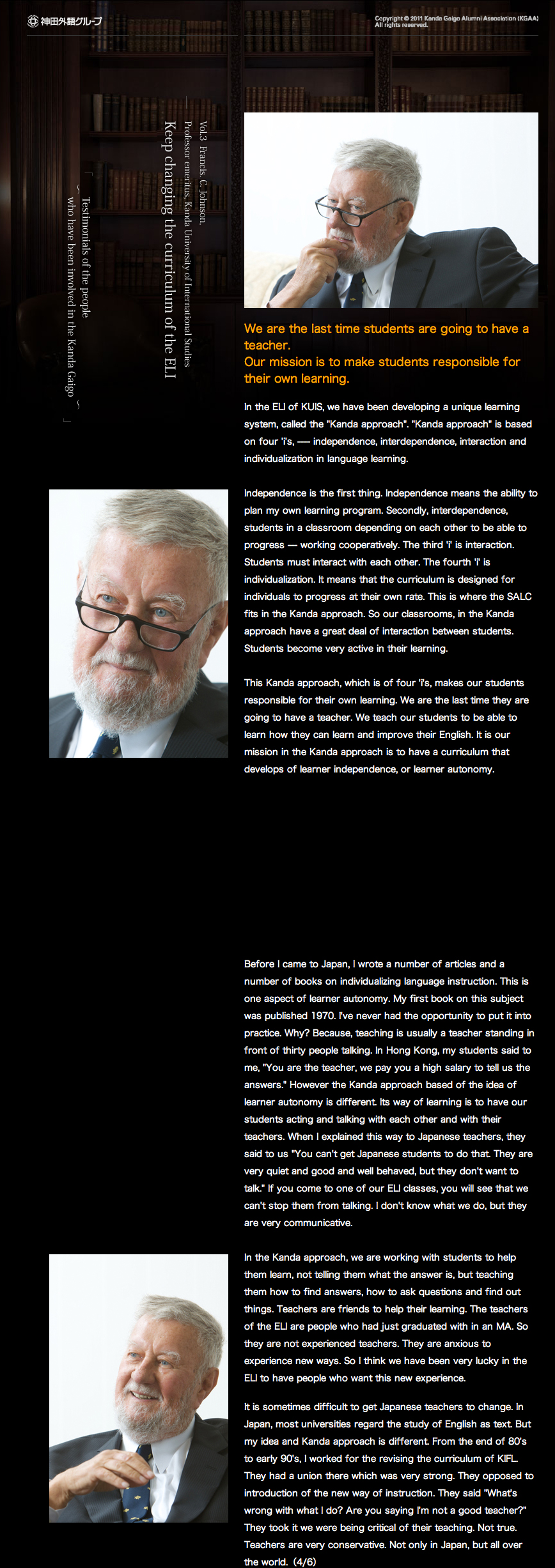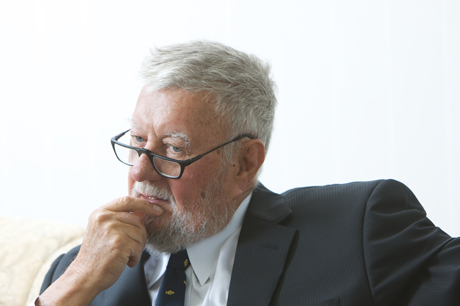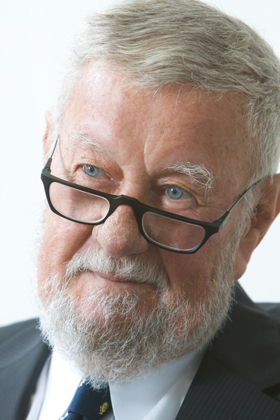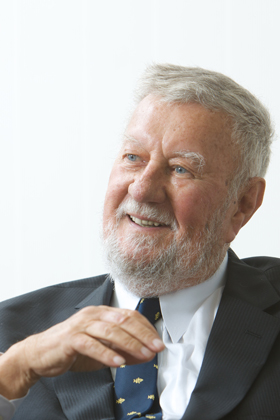

Copyright © 2011 Kanda Gaigo Alumni Association(KGAA). All rights reserved.
50th Anniversary -Interviews-

In the ELI of KUIS, we have been developing a unique learning system, called the "Kanda approach". "Kanda approach" is based on four 'i's, ---- independence, interdependence, interaction and individualization in language learning.

Independence is the first thing. Independence means the ability to plan my own learning program. Secondly, interdependence, students in a classroom depending on each other to be able to progress --- working cooperatively. The third 'i' is interaction. Students must interact with each other. The fourth 'i' is individualization. It means that the curriculum is designed for individuals to progress at their own rate. This is where the SALC fits in the Kanda approach. So our classrooms, in the Kanda approach have a great deal of interaction between students. Students become very active in their learning.
This Kanda approach, which is of four 'i's, makes our students responsible for their own learning. We are the last time they are going to have a teacher. We teach our students to be able to learn how they can learn and improve their English. It is our mission in the Kanda approach is to have a curriculum that develops of learner independence, or learner autonomy.
Before I came to Japan, I wrote a number of articles and a number of books on individualizing language instruction. This is one aspect of learner autonomy. My first book on this subject was published 1970. I've never had the opportunity to put it into practice. Why? Because, teaching is usually a teacher standing in front of thirty people talking. In Hong Kong, my students said to me, "You are the teacher, we pay you a high salary to tell us the answers." However the Kanda approach based of the idea of learner autonomy is different. Its way of learning is to have our students acting and talking with each other and with their teachers. When I explained this way to Japanese teachers, they said to us "You can't get Japanese students to do that. They are very quiet and good and well behaved, but they don't want to talk." If you come to one of our ELI classes, you will see that we can't stop them from talking. I don't know what we do, but they are very communicative.

In the Kanda approach, we are working with students to help them learn, not telling them what the answer is, but teaching them how to find answers, how to ask questions and find out things. Teachers are friends to help their learning. The teachers of the ELI are people who had just graduated with in an MA. So they are not experienced teachers. They are anxious to experience new ways. So I think we have been very lucky in the ELI to have people who want this new experience.
It is sometimes difficult to get Japanese teachers to change. In Japan, most universities regard the study of English as text. But my idea and Kanda approach is different. From the end of 80's to early 90's, I worked for the revising the curriculum of KIFL. They had a union there which was very strong. They opposed to introduction of the new way of instruction. They said "What's wrong with what I do? Are you saying I'm not a good teacher?" They took it we were being critical of their teaching. Not true. Teachers are very conservative. Not only in Japan, but all over the world.(4/6)
Contact: Kimiyo WATANAE
PR department / Sano Educational Foundation
Telephone: +81-33258-5837
http://www.kandagaigo.ac.jp/
Photographer: Hideki SHIOZAWA
http://www.shiozawahideki.com/